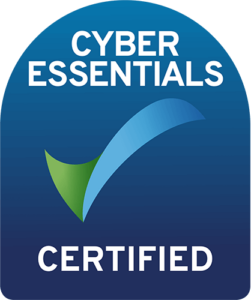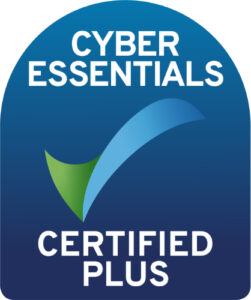Thinc insights
E-invoicing is in the news in the UK – but what is it, and how might it affect you? We explain all in our latest blog.
The nation’s businesses are eagerly awaiting what new Chancellor Rachel Reeves has in store. A package of measures for the coming year has already been announced with the intention of supporting the economy, with one being a consultation on e-invoicing.
In this guide, we’ll explain what the news means, what the benefits are and what technologies can help you.
E-invoicing, or electronic invoicing, is exactly what it says on the tin. It’s the sending and receiving of invoices electronically, moving away from the traditional use of paper invoicing.
As this form of billing presents buyers and sellers with an electronic format, it helps with automating and streamlining vital components of the accounts payable process. The technology itself isn’t new – many organisations will be familiar with sharing data digitally through electronic data interchange (EDI) – but the idea of making e-invoicing commonplace is.
If you have a business trading in the EU, then the chances are you may already be familiar with e-invoicing. It has gained momentum in countries such as France, Germany and Spain, predominantly due to EU legislation.
There are more and more service providers supporting the widespread adoption, assisting with meeting compliance and international invoicing standards such as Pan-European Public Procurement On-Line (PEPPOL). In fact, from April 2020, all public sector institutions within the EU are now required, by law, to operate with PEPPOL invoicing. This is with the view of making company trade across Europe much easier.
Now, the UK could be set to follow suit. The Chancellor has announced plans for a consultation to promote its wider use across businesses and government departments. Not much more is known about the timing of the consultation, though many are expecting news to be forthcoming.
Steve Hare, CEO of business systems provider Sage, was one industry figure to welcome the news.
Research from Sage has highlighted the many ways in which traditional invoicing drains time and resource for UK’s SMEs. For example:
There are several ways in which e-invoicing can benefit your business. One of the main features is VAT compliance, where businesses can better track VAT-related information. This reduces the room for human error in reporting and manual data entry, helping to avoid penalties from His Majesty’s Revenue and Customs (HMRC).
It also helps you manage your cash flow. A paper-based system is much slower and can lead to payments being made late. For smaller businesses, not getting paid on time is one of their biggest challenges for maintaining healthy cash flow.
In fact, with e-invoicing, overall efficiency of the entire invoicing cycle is improved. The cycle can be automated, all the way from creation to payment.
All these benefits can be experienced by SMEs almost instantly, due to the easy integration of functionality with Enterprise Resource Planning (ERP) systems, including Sage 200 and SAP Business One.
It’s important that e-invoicing adoption is compatible with your current ERP system. It’ll need to integrate to help with automating data flow and will ensure accuracy and reduce duplication of effort across business processes once adopted into the existing ERP system.
We’ve talked about the rise in widespread legal mandates being issued by governmental bodies across Europe and beyond, so ensuring that the ERP being used supports UK-specific standards is important.
The ERP will need to support the standards and import-export formats widely used for invoice data, like Universal Business Language (UBL), Extensible Markup Language (XML) or PEPPOL.
Verification that the system is legally recognised for storing e-invoices in compliance with UK tax law is also required.
To limit downtime and ensure smooth integration, thorough training on the e-invoicing platform will be needed. You can get this through providers that specialise in business and finance solutions, who can offer comprehensive e-invoicing onboarding, training and support.
As e-invoices containing sensitive financial data must be stored digitally, systems need to comply with UK data protection laws and GDPR.
Encryptions and secure transmission protocol will need to be met, with digital signatures and public key infrastructure (PKI) as examples.
Through Sage, the Sage Connect application built on the Sage Network platform hosts a series of e-invoicing features as a bolt on to existing Sage products. It has all you’ll need to prepare for e-invoicing, including adhering to global standards and government mandates.
Magma integration with Cindercone also holds all you need for cutting out paper and tackling invoices electronically. Magma helps with the digitised flow of information across teams and business-critical tools, which includes EDI – this is the technology that underpins e-invoicing.
Working with an e-invoicing solutions provider can recommend the best option for you, based on your existing ERP and other systems, your budget and business size. They can provide you with easy-to-understand breakdowns of how to be compliant, as well as training and tutorials to get your teams ready for the widespread shift towards e-invoice use.
At Thinc, we have strong relationships with SAP, Sage and other organisations. This means that we can support our customers in any hot-off-the-press changes, including e-invoicing. If you’re an existing client of Thinc, then simply contact your account manager. If not, and you’d like advice on e-invoicing, just hit the button below.
Related Topics
Ready to learn more about e-invoicing?


Enter your details into the contact form below, and one of our experts will be in touch to arrange a time to speak.
If you’re an existing customer looking for support, please e-mail servicedesk@wearethinc.com, or visit our support page where you can download our remote support apps.